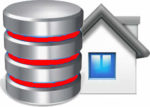Maximise your availability with grid infrastructure, Oracle Real Application Clusters, and Oracle Data Guard.
This Oracle Press book is the 2nd edition of High Availability, which has been updated to cover Release 2 of Oracle 11g.
The book is divided into four parts. The first of these is the Oracle Grid Infrastructure. This section covers the architecture of your grid, the Oracle VM manager, your grid infrastructure installation and configuration such as preparing an Oracle RAC cluster and deleting nodes from the cluster. There are then several workshops on Oracle Automatic Storage Management, these include creating a disk group, an ASM dynamic volume, ACFS for DB Home, and setting up a general purpose ACFS and setting up ACFS replication.
The second part is all about Oracle Real Application Clusters. This covers the basics of RAC and how to set them up. It covers the RDBMS software install, the RAC database creation steps, applying patches via the rolling update method, converting an admin managed database into a policy managed database. This part finishes by telling you how to use OEM 11g Grid Control to create services, create simply FAN callouts and how to configure and test TAF.
Part three is all about disaster planning. The first section is all about Data Guard. This includes how to create a RAC standby database, how to convert an Oracle RAC physical standby to a snapshot standby. As you’d expect this section also covers the important areas such as how to switchover to a Physical Standby, Failover to a Physical Standby and reinstating a failed primary as a standby after failover.
The second part of this section covers backup and recovery for MAA environments. This contains a whole section of really good workshops which cover topics such as how to configure the flash recovery area, how to implement a recovery catalog, using incrementally updated backups, how to recover from a complete loss, using the data recovery advisor and how to backup directly to tape from the standby. The last part of this section covers flashback recovery; using flashback transactions and how to enable and use a flashback database.
Part four is entitled enhancing availability with additional features. This includes a chapter on using the Oracle Data Guard Broker. This chapter includes how to create a physical standby oracle data guard broker configuration. How to modify the Oracle Data Guard Protection level with DGMGRL, and performing a switchover using the broker as well as how to perform a failover using the Broker and reinstate a broker-managed database.
The final chapter of High Availability covers Oracle Grid Control. This includes installing WebLogic for use by Grid Control 11g, how to install Oracle Grid Control 11g Release 1 and how to install management agents using the push method.
With over 500 pages this is quite a large book covering everything you need to know about maintaining a highly available Oracle database. As usual the layout is good, with a lot of code examples. There are not many screenshots in this book as it’s mainly all text.
The great thing about High Availability for Oracle Release 2 is that each section is really relevant to the topic and the use of workshops on each topic really does make it easy to follow the steps in the book in order to complete the tasks in the real world. This book really does tell you what to do to get the job done.

